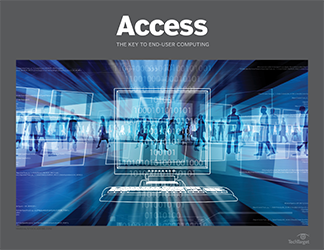PRO+ Premium Content/Access
Access your Pro+ Content below.
Get to know the device-as-a-service trend

This article is part of the Access issue of September 2018, Vol. 2, No. 5
As more organizations move to service models, even hardware purchasing gets the subscription treatment. But what does this mean for IT pros managing end-user devices and the employees that access them? Microsoft in particular has shifted many of its offerings to deliver them as a service in the past several years. Windows itself changed to servicing channels for operating system updates with the release of Windows 10; the company is also pushing the service version of its productivity suite, Office 365. Some VDI shops have turned attention to desktops as a service. And cloud-based technologies are becoming the norm for many infrastructure setups. Enterprise interest and options for device as a service, or PC as a service, is somewhat newer. In 2016, HP Inc. launched its device-as-a-service program, and that same year, IDC reported that about 25% of IT buyers were looking into PCaaS programs. Hardware vendors including Dell and Lenovo also offer device as a service today. Actual adoption of the services model remains low, however...
Features in this issue
-
Essential desktop troubleshooting tools for every IT pro
Remote access tools, help desk systems and others are essential to managing end users. Without these tools, IT would have a much tougher time with even the simplest tasks.
-
Samsung Galaxy Note 9 improvements are small but powerful
Samsung's newest smartphone, the Note 9, is similar to the Note 8 at first glance. But there are improvements under the hood, so learn about what sets it apart in this overview.
News in this issue
-
Get to know the device-as-a-service trend
Everything is a service these days. You can even get Yankee candles delivered from Amazon on a subscription basis. For EUC admins, device as a service is probably a bigger deal.
Columns in this issue
-
Why you don't always need a general-purpose operating system
A purpose-built, or real-time, operating system could be more useful for applications that require a lot of data processing. Several options for this type of system exist today.
-
What mobile device analytics can do for you
The hype around analytics is real. When it comes to mobile, this technology can help IT administrators glean more information about users, business processes and more.
